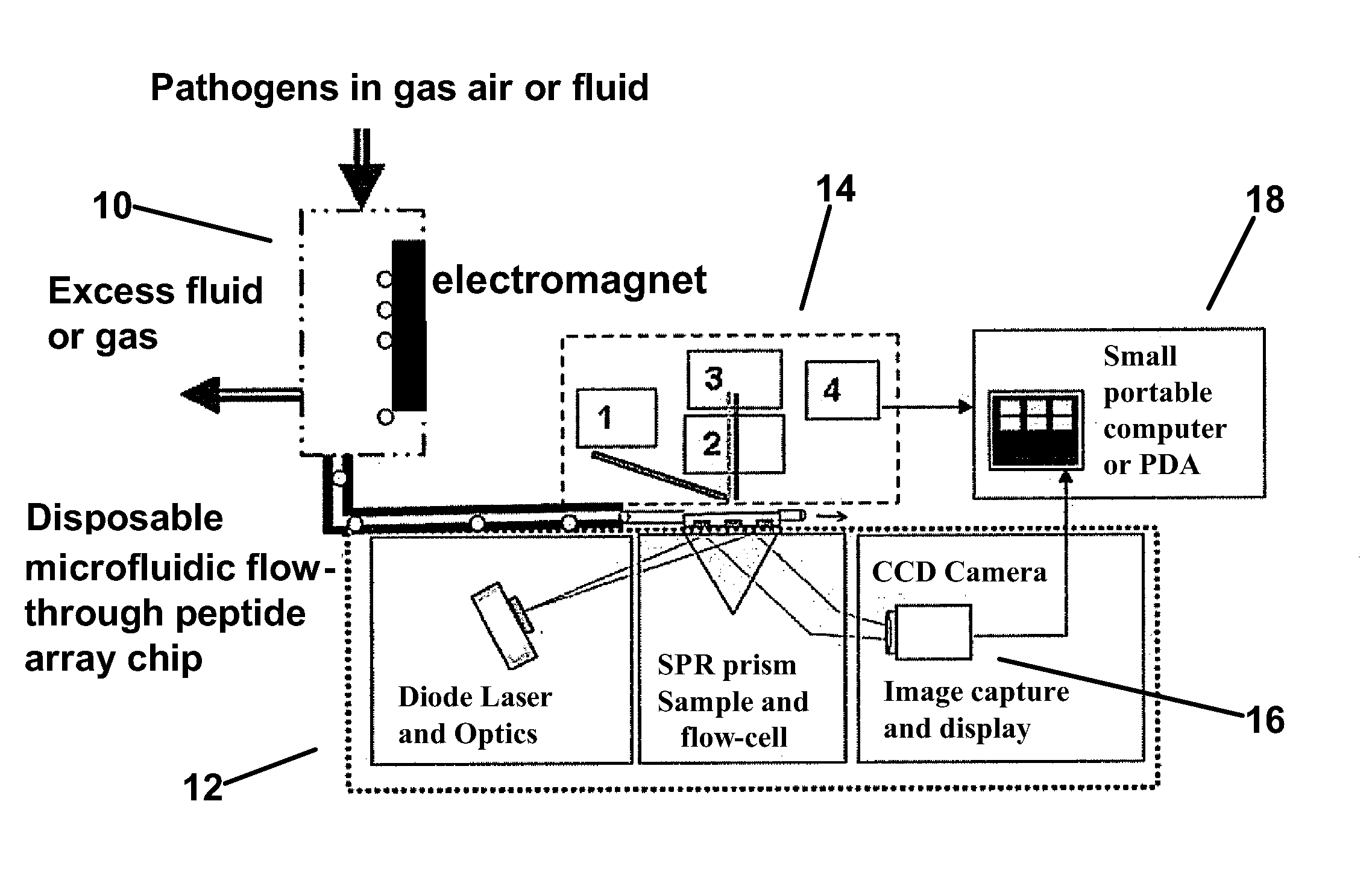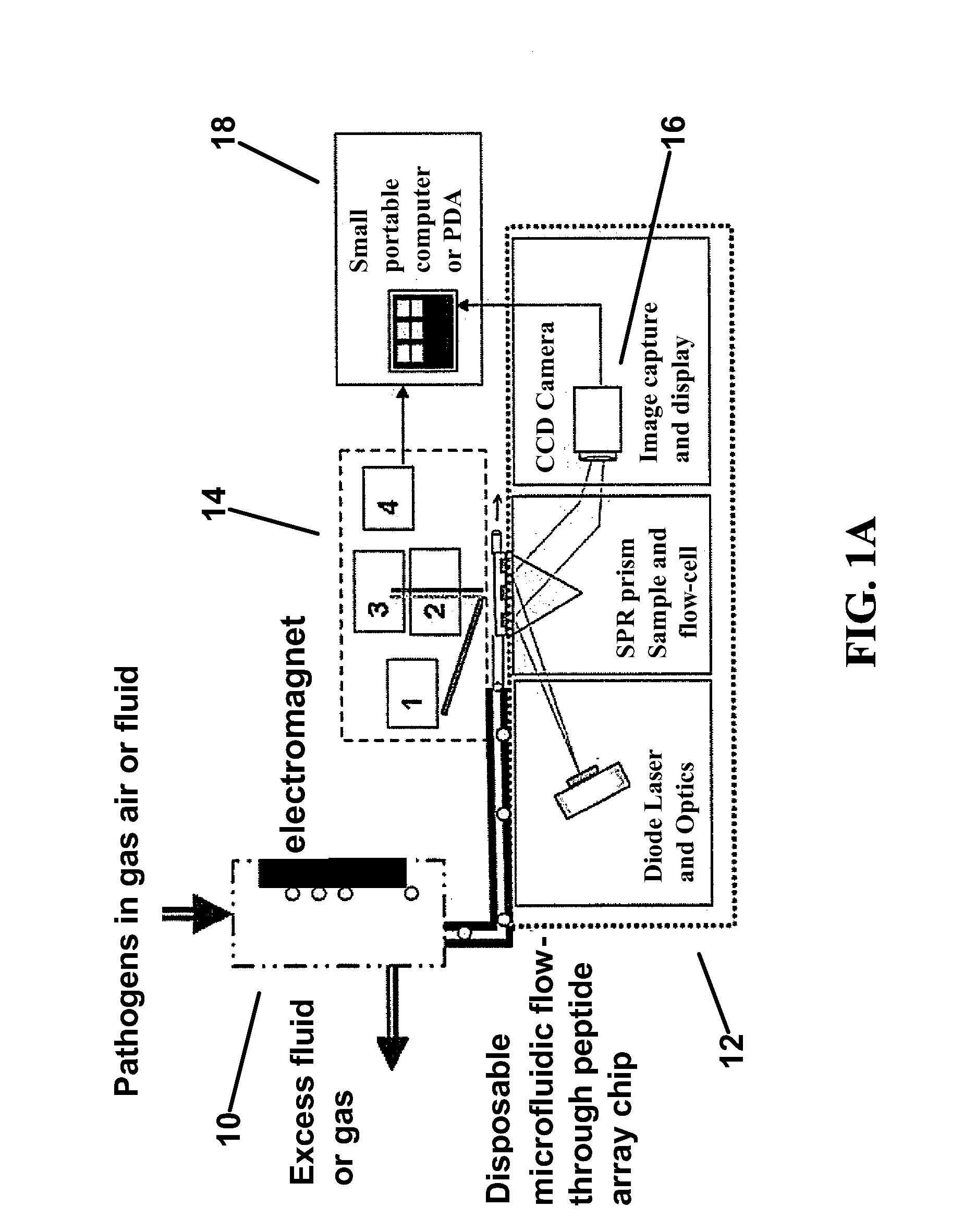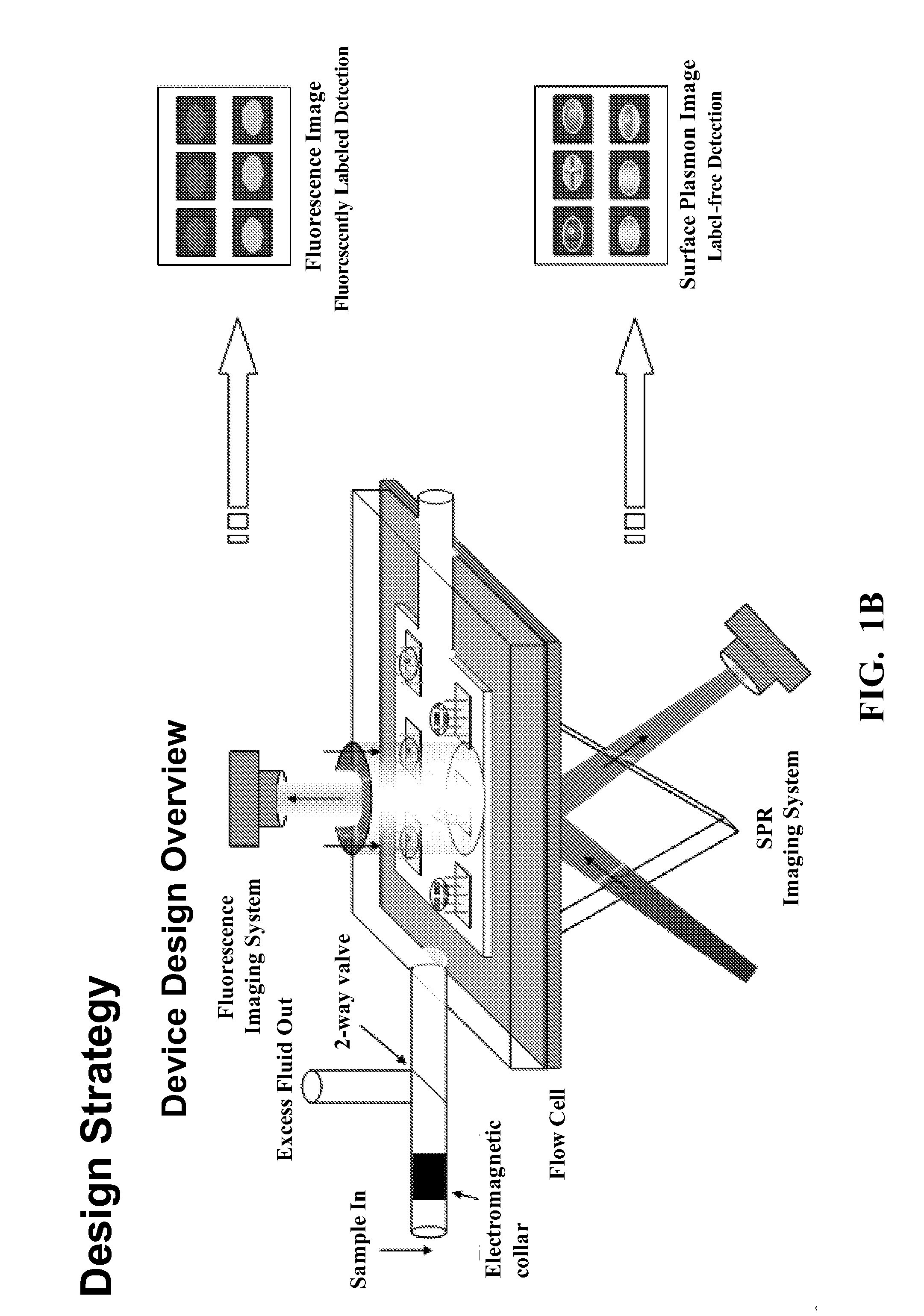Hybrid microfluidic spr and molecular imaging device
a hybrid microfluidic and molecular imaging technology, applied in the field of biological agent detection systems, can solve the problems of high mortality rate, false positives, and laboratory testing, though more precise than field tests, and achieve the effects of low cost, simple, portable and reliable spr imaging devices
- Summary
- Abstract
- Description
- Claims
- Application Information
AI Technical Summary
Benefits of technology
Problems solved by technology
Method used
Image
Examples
example 1
Bacterial Strains, Growth and Staining
Two strains of E. coli, pathogenic E. coli O157:H7 (Castellani and Chalmers strain, ATCC, Manassas, Va.) and the nonpathogenic E. coli DH5-α, (provided by Arthur Aronson, PhD, Dept. of Biological Sciences, Purdue University, West Lafayette, Ind.) were used for proof-of-concept experiments. The bacteria were streaked onto an LB (Luria-Bertani) plate and incubated at 37° C. overnight. Single isolated colonies were aseptically harvested from the LB plate and allowed to grow in 10 mL of LB broth overnight.
In order to assess the fraction of bacterial cells of each strain a simple fluorescence method live / dead bacteria determinations was used. BacLight™ Bacterial Viability Kits (Invitrogen, Inc., Carlsbad, Calif.) provides a sensitive, single-step, fluorescence-based assay for bacterial cell viability. Importantly these well-established assays can be completed in minutes and do not require wash steps. The assays work on bacterial suspensions or bacter...
example 2
Magnetic Pre-Concentration
Magnetic pre-concentration was accomplished using superparamagnetic 1 μm iron oxide beads (Bang's Labs, Fishers, Ind.) coupled with antibodies specific to a membrane antigen on E. coli O157:H7. This linked the bacteria to one or two magnetic beads. After washing with water, the coupled beads and bacteria were diluted with water into different concentrations from 1:10 to 1:100 with a total volume of 0.5 mL. Each of these concentrations was measured in a UV-Vis spectrophotometer (Genesys 10 uv, Thermo-Fisher, Waltham, Mass.) at 350 nm, which is a wavelength absorbed by iron oxide. Next a 200 mT magnet was used to draw the magnetic beads to the side of the tube so that the supernatant fluid could be removed. Previous experiments have shown us that 200 mT is sufficient to recover the magnetic beads. An equivalent amount of water was then added to the beads and shaken. The absorbance at 350 nm of the re-suspended bead mixture was then measured in the spectromete...
example 3
The microfluidic chip was designed using Ansoft HFSS v10.1 software (Ansoft, Pittsburgh, Pa.). The resin mold (Accura SI 10 polymer, 3D Systems Corp., Rock Hill, S.C.) for this chip was then created using a stereo lithography machine (VIPER si2T SLA System by 3D Systems). Once the mold was cured with UV light, a 1:10 ratio of curing agent to PDMS polymer was mixed and then poured over the mold. This was allowed to cure overnight. Next, the PDMS was peeled off the resin mold an inlet port was punched using a blunt tipped 28 gauge needle. Next, the PDMS was attached to a clean glass slide using a Corona plasma etch system (BD 20AC, Electro-Technic Products Inc., Chicago, Ill.). The Corona system is a handheld device that creates a localized plasma field at room temperature and can oxidize the PDMS surface. This was used to treat the PDMS for approximately 20 seconds and then the PDMS was pressed onto the glass slide and heated on a hotplate at 70° C. for 15 m...
PUM
| Property | Measurement | Unit |
|---|---|---|
| diameter | aaaaa | aaaaa |
| volumes | aaaaa | aaaaa |
| thick | aaaaa | aaaaa |
Abstract
Description
Claims
Application Information
 Login to View More
Login to View More - R&D
- Intellectual Property
- Life Sciences
- Materials
- Tech Scout
- Unparalleled Data Quality
- Higher Quality Content
- 60% Fewer Hallucinations
Browse by: Latest US Patents, China's latest patents, Technical Efficacy Thesaurus, Application Domain, Technology Topic, Popular Technical Reports.
© 2025 PatSnap. All rights reserved.Legal|Privacy policy|Modern Slavery Act Transparency Statement|Sitemap|About US| Contact US: help@patsnap.com



